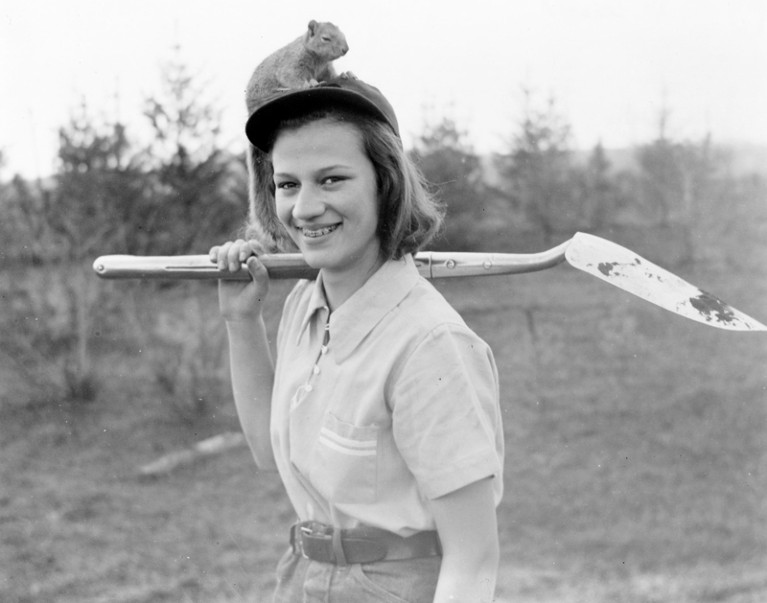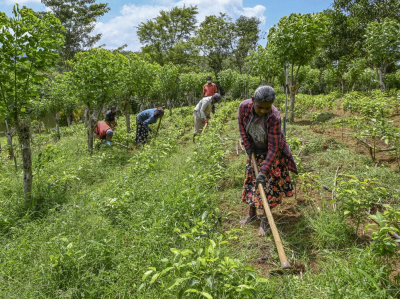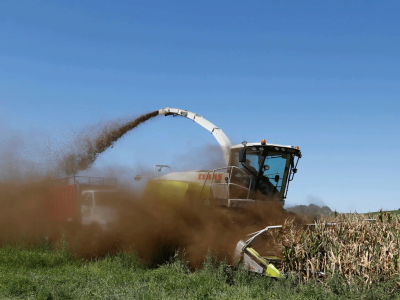
Credit: The Aldo Leopold Foundation and University of Wisconsin-Madison Archives
Estella Bergere Leopold was a palaeobotanist whose studies of fossil pollen and spores helped to reconstruct past environments and link them to the present. Her investigations of the Cenozoic era (from 66 million years ago to the present) provided some of the first insights into the evolution of modern plant communities and the factors that governed their development, including the consequences of long-term climate change, mountain building and volcanism. Few researchers before her had traced the rise of present-day ecosystems through time, and her discoveries helped to connect the relatively well-studied ice-age influences on vegetation with deep-time geological processes.
Leopold, who has died aged 97, was an ardent conservationist who argued that nature should be cherished and protected. She thought that science should be used in defence of the planet; this is evident in her writings, lectures and political activism.
Leopold was born in Madison, Wisconsin, the youngest daughter of conservationist Aldo Leopold and his wife Estella Bergere Leopold. All five Leopold children became esteemed scientists and conservationists in their own right. Her childhood, particularly her time spent at the family cabin, called ‘the Shack’, in central Wisconsin spurred an early interest in ecology. Leopold graduated with a degree in botany from the University of Wisconsin–Madison in 1948 and a master’s degree from the University of California, Berkeley, in 1950. She moved to Yale University in New Haven, Connecticut, to join a new graduate programme in conservation headed by Paul Sears, a pioneer in palynology (pollen analysis), and also to study with mathematical ecologist G. Evelyn Hutchinson and his former student Edward Deevey Jr. Her dissertation focused on the history of New England forests through the analysis of pollen and spores extracted from peat deposits, and palynology became her main research tool.
Current conservation policies risk accelerating biodiversity loss
After graduating from Yale in 1955, Leopold was one of the few women who joined the US Geological Survey in Lakewood, Colorado, as a scientist. By meticulously comparing fossil pollen and spores with modern ones, she reconstructed past floras — innovative and insightful findings at the time. Her early study of the Eniwetok and Bikini atolls in the Pacific Ocean revealed the existence of a tropical rainforest in the south Pacific during the Miocene epoch (23 million to 5 million years ago). She examined Cenozoic plant-fossil sites for evidence of the origins of modern flora. Leopold described the transition from ancient species to newer variants in the Rocky Mountains of western North America, which showed an earlier modernization trend in the middle of the continent than in coastal areas, as a result of greater cooling, seasonality and mountain uplift.
Her research in Colorado on the Florissant fossil beds — well-preserved sediments from a 34-million-year-old lake — spurred her to lead a conservation effort in the area. In 1969, the 2,428-hectare Florissant Fossil Beds National Monument was established. Other successful actions included opposing oil-shale development in western Colorado, protesting dam building in the US Grand Canyon and stopping the shipping of highly radioactive materials through waterways that connected the Pacific Northwest region to the Pacific Ocean. Leopold also served on several conservation boards and was president of the Aldo Leopold Foundation, which she founded with her siblings to promote ethical land stewardship.
From 1976 to 1982, she directed the Quaternary Research Center at the University of Washington in Seattle and maintained an active research programme there, studying the palaeoecology and palaeoflora of the western United States and comparable settings in China. She officially retired in 2000, but remained active in research until her death.
Leopold recognized the power of scientific credentials in environmental activism. Throughout her career, she promoted palaeobotany as a tool for land protection. She argued that the value of a place was partly the result of its ecological history and how environmental events shape it. One of those events is fire. Using ethnographic and palaeoecological studies, Leopold highlighted the importance of Native American burning practices before European settlement for maintaining the health of prairies and woodland; she actively supported deliberate fire management.
Address the growing urgency of fungal diseases in crops
In 1969, Estella was named conservationist of the year by the Colorado Wildlife Federation; she received the International Cosmos Prize for contributions to conservation in 2010. But those awards, and numerous others, scarcely do justice to the personal influence that she had on students. I met Estella at the US Geological Survey as an undergraduate student and was overjoyed when she accepted me for graduate studies at the University of Washington. Her unbridled enthusiasm for science and environmental protection was inspiring. Estella had what we students called a ‘1,000-volt look’ whenever an idea piqued her interest — to experience this was electrifying.
Estella will be remembered for her important contributions to ecology and for a life-long crusade to protect the land. More than most individuals, her scientific interests were inextricably linked to her environmental activism. She was keenly aware of her family heritage and, like her father, advocated simple outdoor living as a way to learn and appreciate nature. As a woman in a male-dominated field, she maintained a strong sense of humour and fearlessness throughout her career; yet, she also had immense grace and generosity. Estella leaves behind colleagues, former students and environmental activists who treasure her influence and their time with her.

 Current conservation policies risk accelerating biodiversity loss
Current conservation policies risk accelerating biodiversity loss
 Address the growing urgency of fungal diseases in crops
Address the growing urgency of fungal diseases in crops
 How I fuse Western science with Traditional Knowledge
How I fuse Western science with Traditional Knowledge
 Biodiversity loss and climate extremes — study the feedbacks
Biodiversity loss and climate extremes — study the feedbacks
 A collaborative agenda for archaeology and fire science
A collaborative agenda for archaeology and fire science
 Sensory perception and behaviour of insect pollinators under climate change
Sensory perception and behaviour of insect pollinators under climate change






